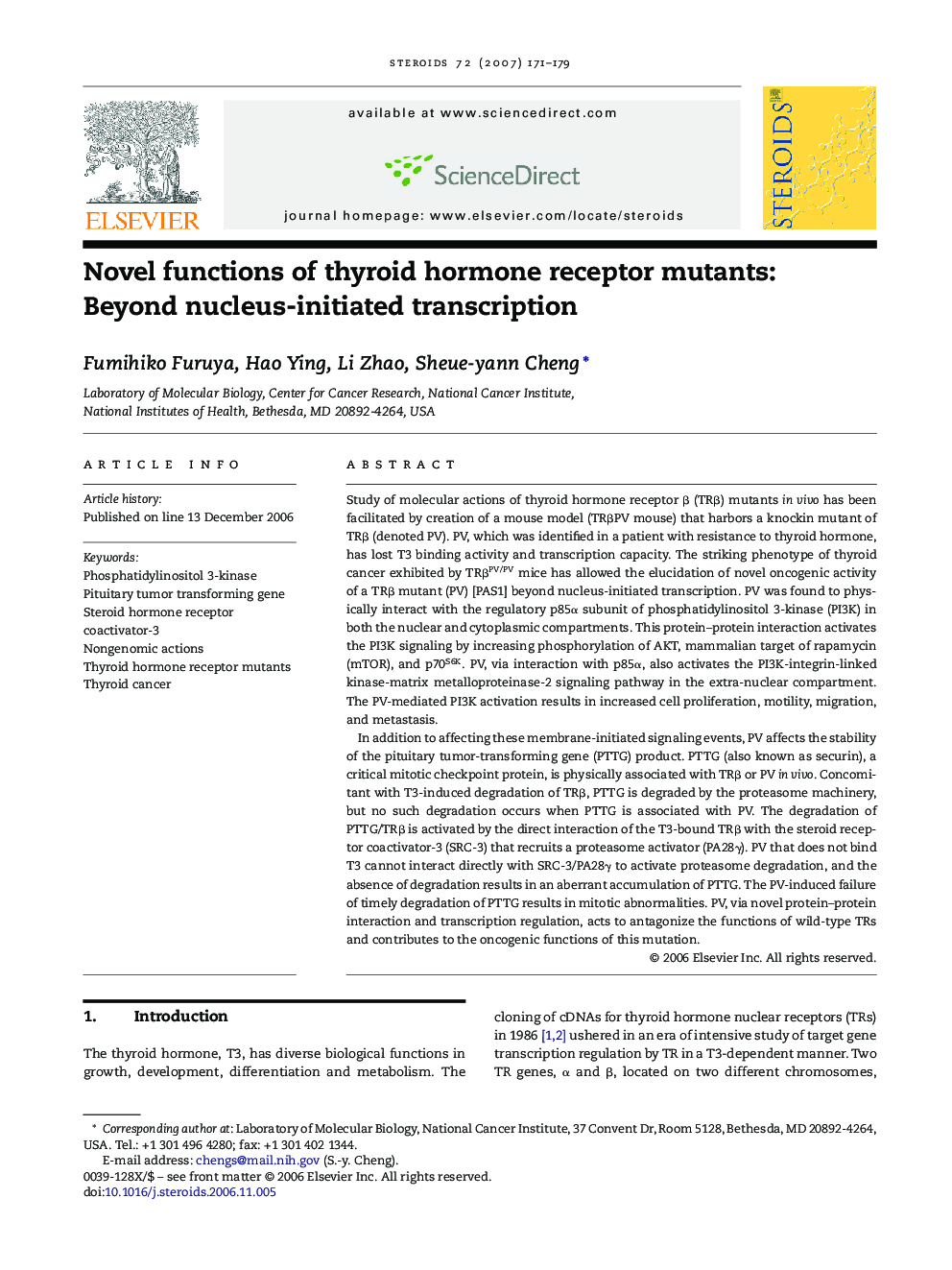| Article ID | Journal | Published Year | Pages | File Type |
|---|---|---|---|---|
| 2028840 | Steroids | 2007 | 9 Pages |
Study of molecular actions of thyroid hormone receptor β (TRβ) mutants in vivo has been facilitated by creation of a mouse model (TRβPV mouse) that harbors a knockin mutant of TRβ (denoted PV). PV, which was identified in a patient with resistance to thyroid hormone, has lost T3 binding activity and transcription capacity. The striking phenotype of thyroid cancer exhibited by TRβPV/PV mice has allowed the elucidation of novel oncogenic activity of a TRβ mutant (PV) [PAS1] beyond nucleus-initiated transcription. PV was found to physically interact with the regulatory p85α subunit of phosphatidylinositol 3-kinase (PI3K) in both the nuclear and cytoplasmic compartments. This protein–protein interaction activates the PI3K signaling by increasing phosphorylation of AKT, mammalian target of rapamycin (mTOR), and p70S6K. PV, via interaction with p85α, also activates the PI3K-integrin-linked kinase-matrix metalloproteinase-2 signaling pathway in the extra-nuclear compartment. The PV-mediated PI3K activation results in increased cell proliferation, motility, migration, and metastasis.In addition to affecting these membrane-initiated signaling events, PV affects the stability of the pituitary tumor-transforming gene (PTTG) product. PTTG (also known as securin), a critical mitotic checkpoint protein, is physically associated with TRβ or PV in vivo. Concomitant with T3-induced degradation of TRβ, PTTG is degraded by the proteasome machinery, but no such degradation occurs when PTTG is associated with PV. The degradation of PTTG/TRβ is activated by the direct interaction of the T3-bound TRβ with the steroid receptor coactivator-3 (SRC-3) that recruits a proteasome activator (PA28γ). PV that does not bind T3 cannot interact directly with SRC-3/PA28γ to activate proteasome degradation, and the absence of degradation results in an aberrant accumulation of PTTG. The PV-induced failure of timely degradation of PTTG results in mitotic abnormalities. PV, via novel protein–protein interaction and transcription regulation, acts to antagonize the functions of wild-type TRs and contributes to the oncogenic functions of this mutation.
